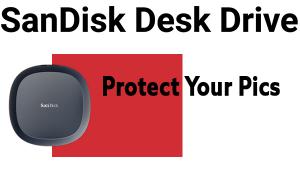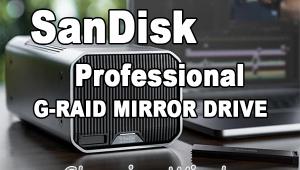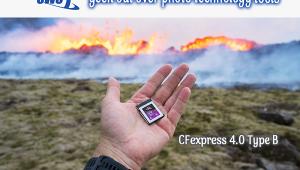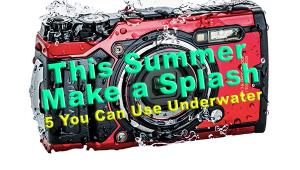5 Best Digital Cameras for Street Photography You Can Buy Today

Street photography is like chili recipes: every practitioner has their own flavor and style. One thing that all variations have in common, though, is the need for the right equipment to make it happen. Here are the five best cameras that can be used for nearly every street photography situation. And as an added bonus, an example of work from a young street shooter, Yuqi Wang, who has followed her own road.

Exactly what is street photography?
Although the definition is subject to personal interpretation, there is a constant thread that binds all fashions. Street photography is unstaged, spontaneous recording of some aspect of the human condition. It’s sometimes called the “decisive” or “critical” moment. I call it Civilian Photojournalism, and I say that with high regard.
There is a definite sense of randomness in candid photography, with a healthy dollop of precipitous good fortune thrown in. Some suggest that there is an undercurrent of voyeurism, but that’s arguable. The manifesto of street shooting requires that the subject be public, although probably unnoticed by others. Street photography is discovered, not prearranged. And although it doesn’t always include people, it usually does—or at least some relic of human behavior.

What is required of street shooting cameras? That’s easy: everything good in a small, easy-to-carry package. Street cameras must deliver superb quality images above everything else. And for most of us, they must provide outstanding low-light, high-ISO performance.

Regardless of brand or format, street photography tools must exemplify instantaneously fast handling and response, because missing a millisecond can mean missing everything. Because most street photographers work in a self-imposed shadow world, many users prefer that their camera has a covert, stealth persona, truly under the radar. For this and other reasons, street cameras almost always have a compact, highly portable form-factor—although there are certainly exceptions to that rule.

Meet the exception that makes the rule: Yuqi Wang. Yuqi ( @yukiwang ) is a video artist and photographer extraordinaire. Her list of awards and exhibits is exhaustive, and her approach to photography is unique and refreshing. Yuqi’s work is not limited to street photography, but the street genre is prominently included in her portfolio. She’s an exception because her camera of choice is a Mamiya 645, which of course uses 120 roll film and captures images that are 6 x 4.5 cm in size on celluloid. Yup, a big ol’ analog roll film ogre—the very antithesis of a compact digital stealth camera.
Here’s our lineup of the best digital cameras money can buy for street photography.

Leica M10-P
No camera brand on Earth has a history of street photography equal Leica. Not even close. From Alfred Eisenstaedt and Henri Cartier-Bresson, both of whom used film-based Leica cameras, to today’s modern marvels who shoot digital, only asphalt has seen more street than Leica.
Heralded as the quietest Leica ever in our review, the Leica M10-P builds upon the success and features of its sister model the Leica M10. The famous Leica logo has been removed from the front to enhance the covert aspects, and it has a shutter that is so quiet that it’s virtually inaudible. Also, upgraded from the M10, the back LCD monitor on the Leica M10-P is touchscreen (but it’s protected by Gorilla Glass).
This compact manual focus rangefinder-style digital camera features a 24-megapixel full-frame CMOS sensor, Aperture Priority Automatic or fully Manual exposure modes, a 3-inch, 1-million dot LCD and built-in Wi-Fi. Available in black chrome or traditional silver-colored chrome.
Because it has interchangeable lenses and accepts nearly all older Leica M-mount lenses, the Leica M10-P stands in a category by itself among the cameras in this roundup.
Available from Amazon, price is $7795 (body only).

Ricoh GR III
Only a few cameras have reached the status of “Cult Camera.” Ricoh is at the top of that short list. Whether you’re using the latest model, the Ricoh GR III, or have an older one, you can’t be disappointed. Even the outdated Ricoh GR Digital IV, a 10-megapixel model that disappeared from the market years ago, still commands a high price in the secondhand market, and still delivers outstanding results.
The Ricoh GR III has a 24-megapixel APS-C format CMOS image sensor that sits behind a prime (non-zoom) 28mm f/2.8 (equivalent) lens that is as sharp as they come. It’s small, rather nondescript, and is ideally suited for the cloak and dagger genre. It weighs a scant 9 ounces but don’t let its light weight make you think that it’s a lightweight. It’s a serious camera that provides a very complete range of controls including a 3-inch LCD that’s a capacitive touch screen with touch-to-focus option. It also provides DNG Raw format and has the Anti-Alias (low-pass) filter removed. Plus there’s sensor-shift image stabilization and Hybrid AF (image plane phase-matching and contrast detection).
There’s a lot to love. In our review last year, we called the Ricoh GR III a street shooting champ. Check out that story for some sample images we captured in The Garden State.
Available from Amazon, price is $897.

Fujifilm X100V
Roman numeral V translates our number 5 and, by no coincidence, the Fujifilm X100V is the fifth model in the X100 saga. The fourth model was suffixed with an “F” for fourth, and number three was “T.” We like this camera for general use and street shooting. You can read our Fujifilm X100V review here.
Photographers as well as people who don’t use cameras seriously all marvel at the gorgeous retro styling of the Fujifilm X100V. It’s certainly handsome. The exterior appearance—for the most part—has remained the same since the first model was introduced back in 2010. Folks who have used this treasure tout the legendary “Fuji Colors” for their subtle brilliance and rich fidelity. In other words, it looks great, and so do the images it captures. Leveraging their legendary success as a manufacturer of color film, Fujifilm has built several film simulation modes into the X100V, including an incredible emulation of Acros black & white film.
The Fujifilm X100V features a 26.1-megapixel, APS-C size, BSI (Back-Side Illuminated) X-Trans CMOS 4 sensor that sits behind a 23mm f/2.0 prime (non-zoom) lens (35mm equivalent). It offers a two-way, tilting LCD touchscreen in addition to the dual purpose eyelevel EVF. For movie makers, the X100V delivers 4K 30p and FHD 120p video recording.
Available from Amazon, price is $1399

Sony Cyber-shot DSC-RX100 VII
Another tried-and-true camera platform that has gone through a number of upgrades and improvements as it evolved, the Sony RX-100 VII steps ahead of the pack of street shooters for many reasons, including a potent 24-200mm (equivalent) Zeiss Vario-Sonnar T* zoom lens that covers true wideangle to long telephoto focal lengths. That’s perfect for street photography. Even with an 8.3X zoom it still slips into a jacket pocket. Read our review here.
The Sony RX-100 VII features a 20.1-megapixel Exmor RS CMOS sensor that measures one full inch. In addition to 4K video, the advanced sensor design (with help from the Bionz X image processor) is capable of supporting blackout-free continuous shooting up to 20 fps and Single Burst Shooting at an other-worldly 90-fps setting that can catch a cheetah sneezing. Video gets serious here, too, with the incorporation of S-Log3 and HLG gamma settings. High Frame Rate shooting allows you to record at up to 960 fps for slow-motion playback.
This magnificent street shooter has a 3-inch, 922k dot LCD and a pop-up 2.36m-dot OLED electronic viewfinder that stays neatly out of the way when packing or carrying. The LCD is touchscreen and offers both Touch Focus and Touch Shutter functions. The camera also sports Bluetooth and Wi-Fi connectivity for sharing imagery to a linked mobile device or for embedding location information from your smartphone.
Available from Amazon, price is $1298

Canon PowerShot G5X Mark II
Check out our early coverage of this camera when it first appeared. Shutterbug called it Pocket Power. The Canon PowerShot G5X Mark II is certainly that—and more. It features an extremely useful pop-up EVF (Electronic Viewfinder) and Canon’s fast, 5X optical zoom lens (24-120mm f/1.8-2.8) with Optical Image Stabilizer. In other words, you’re off to the races with this in your bag.
The Canon G5X Mk II is versatile. In addition to the true wideangle to telephoto 5X zoom it does close-up photography down to 2.0 inches. Also the camera features a pop-up 2.36m-dot electronic viewfinder, 180° tilting touchscreen LCD, and has both Bluetooth and Wi-Fi for wirelessly connecting to a mobile device.
The Canon PowerShot G5X Mark II has a 20.1-megapixel, 1.0-inch Stacked CMOS Sensor and Canon’s famous DIGIC 8 image processor. For video shooters there’s 4K 30p / FHD 120p recording capabilities. One of the smallest and lightest cameras in this group, it’s easy to carry and leaps into action quickly.
Available from Amazon, price is $899

Conclusion
Did you notice that every one of these cameras is the latest generation of a model that has seen many incarnations? To me that means many things. First, each represents the refinement of a camera platform that already has made its bones. That’s comforting. Second, if the current model just doesn’t fit your budget, chances are that its predecessor might. Of course, that may mean giving up a feature, some speed or a couple megapixels, but on the whole probably worth the sacrifice.
Many street shooters would have me pilloried and flogged for cropping and post-processing my street images. Some even print a narrow margin of the outside area of the frame to prove that no cropping occurred. (In the old days, we filed the inside edges of our negative carriers so that a unique, ragged border proudly surrounded our images like a menacing fence.) Well, I crop (occasionally) and I post-process (generally) and use HDR techniques to extract minute details (very often). Fortunately, I only have to please one person.
—Jon Sienkiewicz
(As an Amazon Associate, Shutterbug earns from qualifying purchases linked in this story.)

















































